![]() Sem 03 /05| Environmental Flows
Sem 03 /05| Environmental Flows
Making Homes in Inner City Contexts
Anuj Daga
The course ‘Environmental Flows’ at SEA has been placed pedagogically to interrogate the dichotomies of nature/culture, inside/outside, human/non-human and place design as a catalytic event within such other binaries that have landed architecture in the narrow practices of ‘greening’, ‘sustainability’, ‘green building codes’, ‘energy efficiency’ and such other forms which tend to get subsumed to the forces of the market. While understanding of the term ‘environment’ for this exercise is expanded to include material/immaterial, living/non-living aspects that shape the condition we live in – a ‘maahaul’ that comes to inform our consciousness, the notion of ‘flows’ emphasizes on the interconnectedness, networks and interdependencies between these systems. The course attempts a holistic engagement with the environment acknowledging its contemporary spatial politics.
In order to experiment ways in which spatial practitioners can place architecture within a nuanced understanding of the environment, the studio chose to engage with the fast transforming coastline of the union territory of Daman on the Arabian Sea. The 12-km sea-facing ecological stretch of Daman is currently being transformed into a promenade under the supervision of the State in order to give an economic boost to the place through tourism. Being two hours away from several cities of Maharashtra and Gujarat, Daman is set to become the next leisure destination on the northern Arabian coast. The Portuguese town embedded in the alcohol-ridden dry state of Gujarat offers a perfect release to a large population in its scenic and silent setting. Such an internal geopolitics implies the hardening of the entire shoreline to incentivise vehicular traffic, which may be eventually abutted by a strip of restaurants, hotels, lodges, parking, and such service-programmes that cater to the tourist industry. Not only the introduction of the coastal road disengages with the existing ecology of the marine and estuarine life of the edge, but the above real estate developments have also begun to erase, evict and push out the existing socio-economic dependencies on the coast. The land acquisition and rampant construction have inevitably caused the pushing back of fishing activities, food-stalls along the beach and several other forms of livelihood and leisure that once enlivened the coast of Daman, in favour of foregrounding a face that speaks to a certain gentry. The architectural interface between the land and sea is aspirationally visualized in the image of those in Western countries, or their Gulf-derivatives. All in all, these transformations miss out in addressing the concerns of the sensitive ecology of the shore and its specificities linked to socio-economic dependencies that are of key importance to the inhabitants of the city. The studio project is placed in such a context to devise architectural strategies that are able to reimagine new programmes and forms towards inhabiting the coast more sensitively and responsibly.
The studio was divided into three primary phases of the field visit, articulation of the environmental question for a site, and developing an architectural strategy to address it formally and programmatically. The field observations were conducted over three days. These included:
- Observations through ground, terrain and vegetation conditions by observing closely the local flora and fauna, their eco-systems, and annual cycles.
- Drawing environmental flows by cutting long transects to study interdependencies between different life forms.
- Quantification of flows by scientific methods to understand how thermal, visual, hearing, and smell adds to the shape of spatiality and its experience.
- Interviews and built form mapping to understand the socio-political negotiations through which people have established their equation vis-a-vis their own surroundings.
All observations of the site were collectively mounted on a large map which helped create an environmental map of Daman’s coastline.
In the second phase, students were asked to articulate specific questions that they would like to address through their individual observations. These questions were recorded and expressed as argumentative drawings. Complimentary or resonant questions across the studio were paired into a student group, which was then asked to formulate a spatio-environmental inquiry for their architectural project. Each pair was asked to make an argumentative drawing that encapsulated the site and inquiry - one that could begin to direct programmatic approaches for environment-specific intervention. This drawing became the instrument through which students launched their architectural responses.
The third stage was dedicated towards making close site readings and articulating an appropriate architectural strategy that engages formally with this spatio-environmental question. The resultant designs explored activation of edges, softening the thresholds, generating socio-cultural exchange as well as developing co-species affordances.
The studio work was compiled into a website that can be accessed here.
Some of the work was also taken towards an exhibition ‘Dhara’ at the Avani Institute of Design, held during August 2022.
 Artisanal Fishing Atheneum, Aditya Mahajan and Unnati Gandhi
Artisanal Fishing Atheneum, Aditya Mahajan and Unnati Gandhi
 Blurring the Edge, Anika Pugalia and Kankana Choudhary
Blurring the Edge, Anika Pugalia and Kankana Choudhary
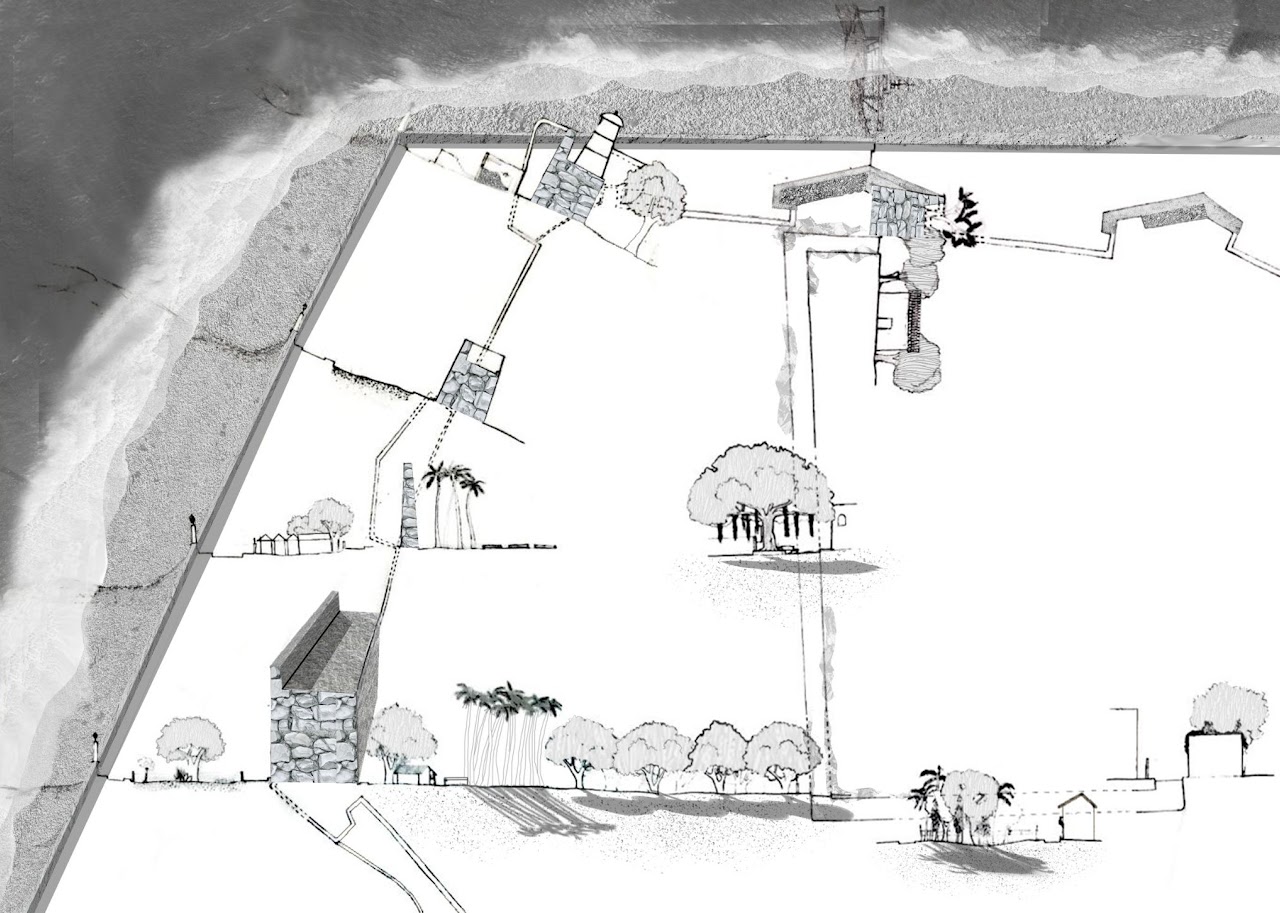 Microclimatic Fort Wall, Chetasvi Patel and Shreeraj Narwade
Microclimatic Fort Wall, Chetasvi Patel and Shreeraj Narwade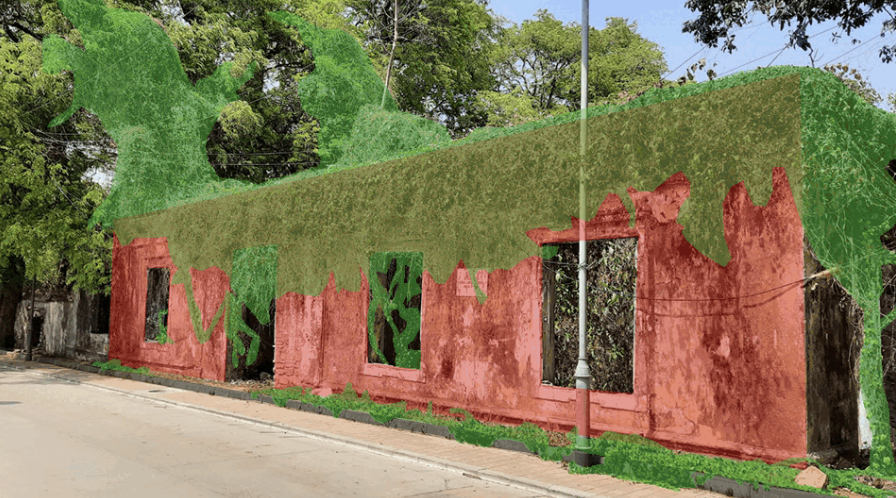
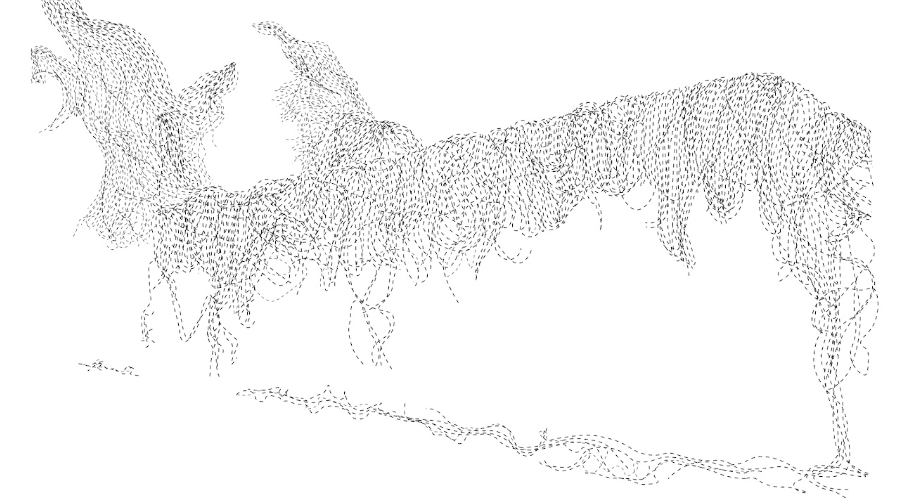 Engaging Conservation, Jayesha Chimanpure and Rishabh Debnath
Engaging Conservation, Jayesha Chimanpure and Rishabh Debnath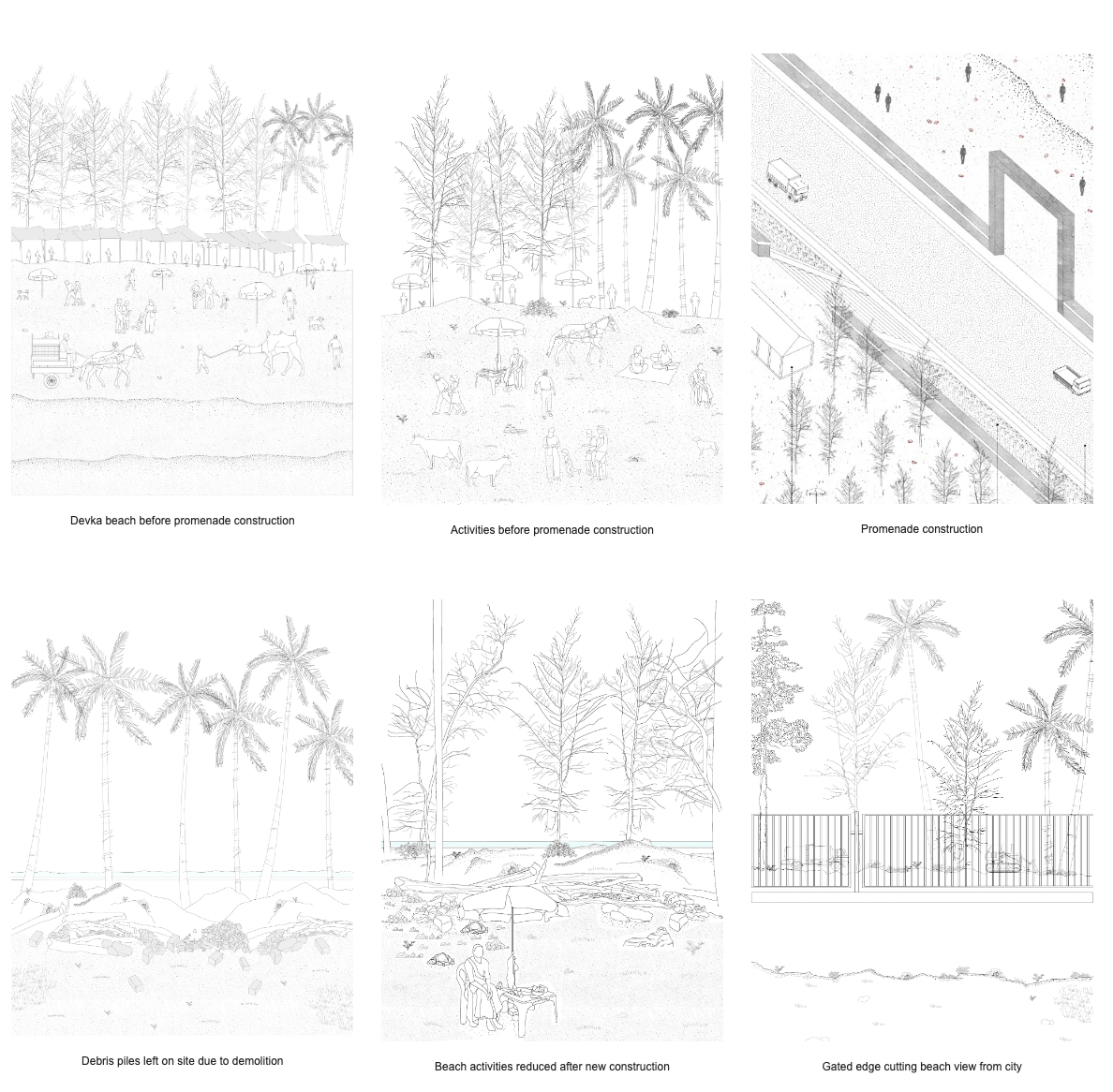 Restoring Experiences,
Zahra Bagasrawala and Devvrat Singh
Restoring Experiences,
Zahra Bagasrawala and Devvrat Singh  Walls and Walkways, Krisha Dhariya and Astha Desai
Walls and Walkways, Krisha Dhariya and Astha Desai
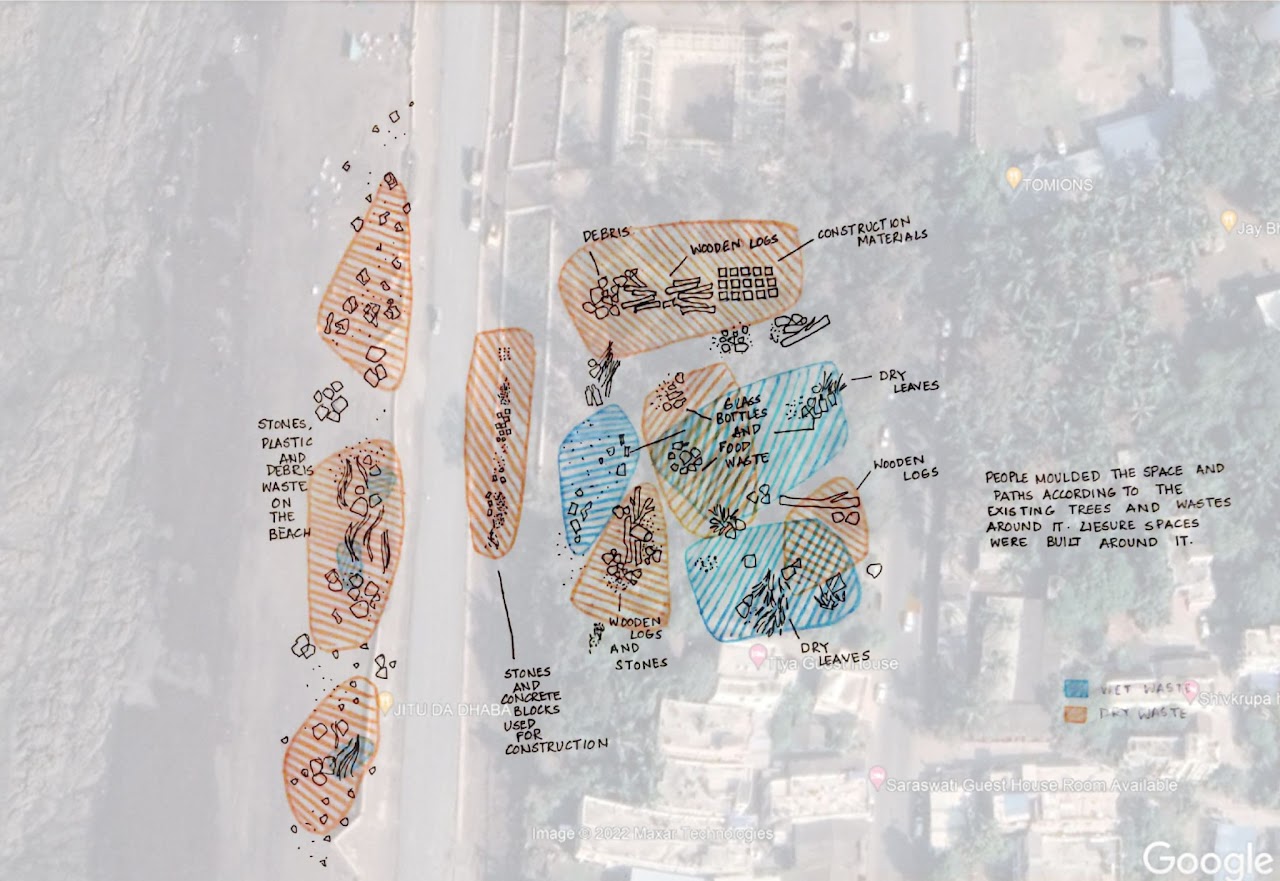
Connecting the Disconnect, Sanskriti Agarwal and Aditi Gaikwad
![]() The Ingress, Ansh Shetty and Swara Chavan
The Ingress, Ansh Shetty and Swara Chavan
![]()
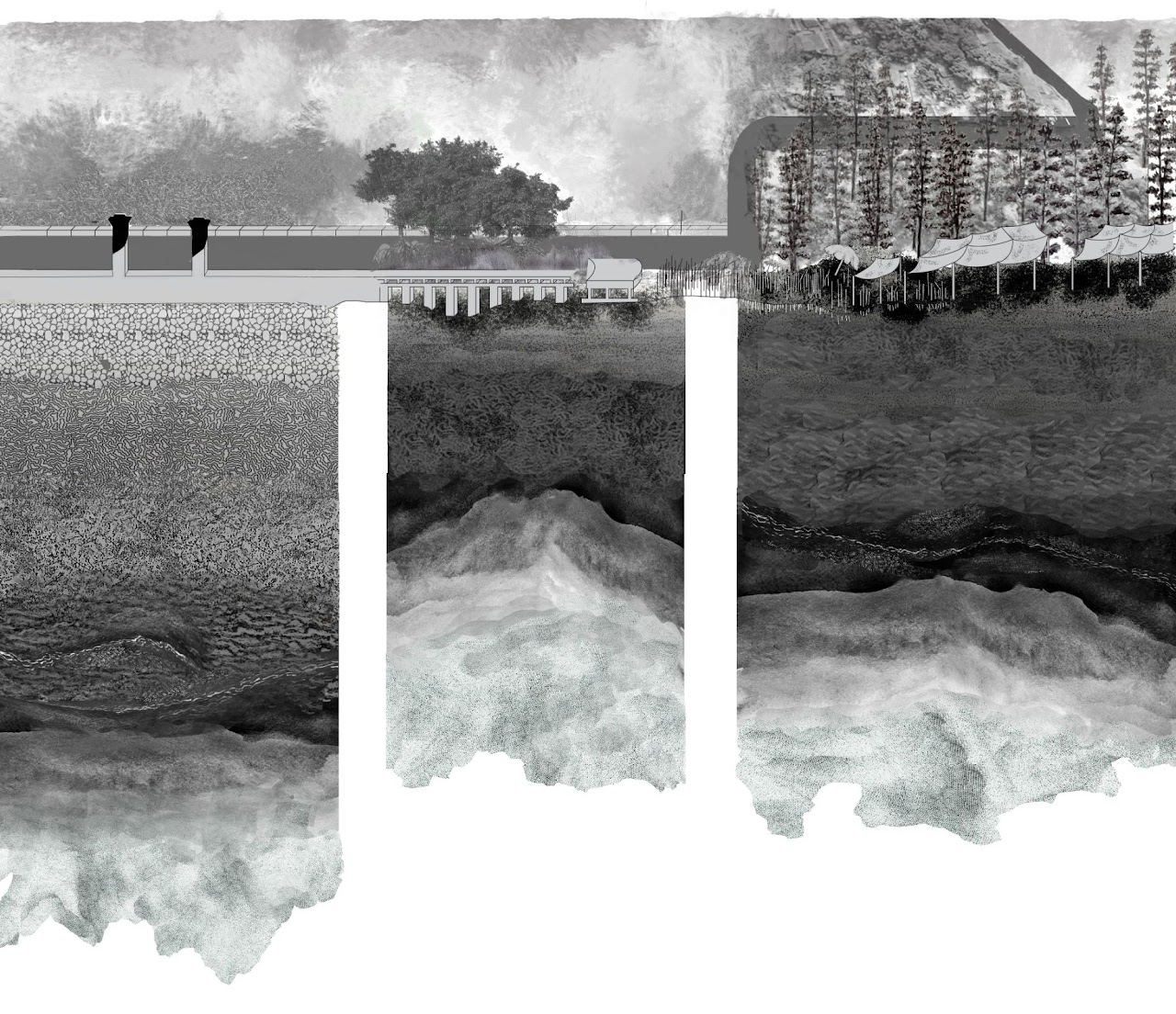 The Ingress, Ansh Shetty and Swara Chavan
The Ingress, Ansh Shetty and Swara Chavan
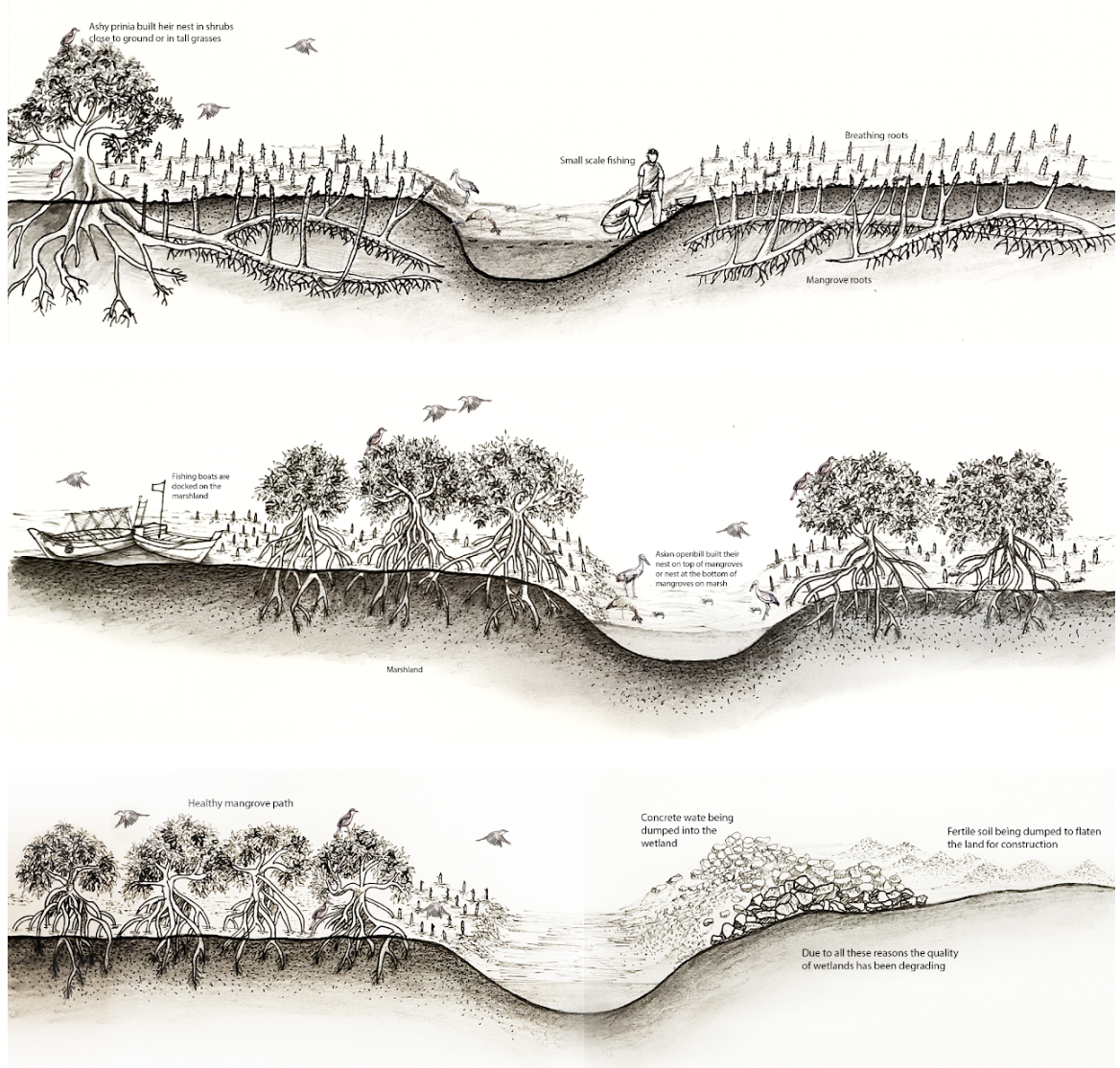
Wetland Experience, Neha Shah and Sahil Sawant
 Sem 03 /05| Environmental Flows
Sem 03 /05| Environmental Flows